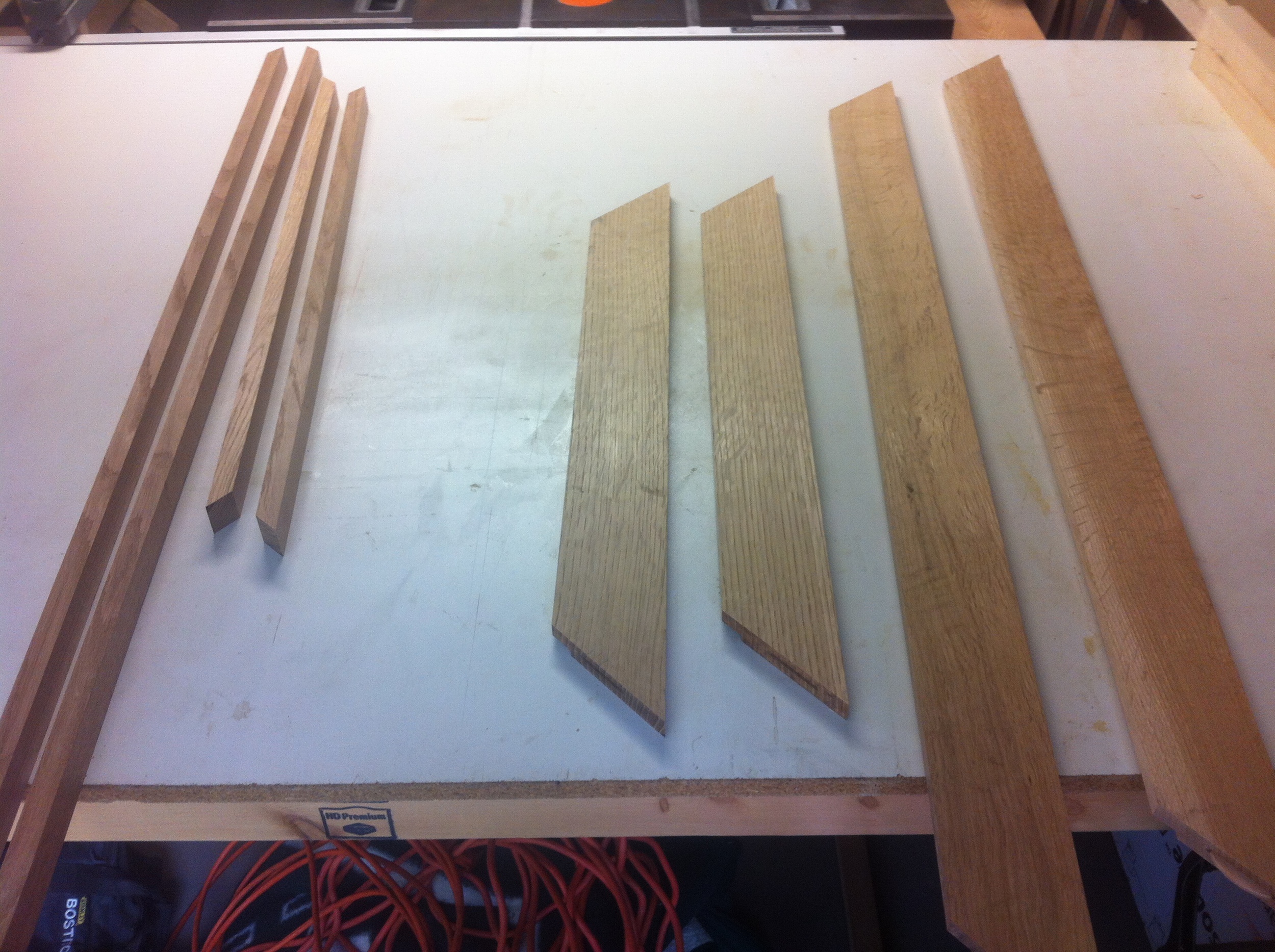Shows, Mirrors, and Veneers
The world is full of things to make from wood—you simply have to choose what you want to make yourself. It can be small or simple; it doesn't have to be a masterwork that people will revere in generations to come. Making a mirror for an entryway wasn't exactly small, but the process is sometimes more enjoyable because of its straightforward nature. Four corners, a piece of glass, and a little oil goes a long way.
A good friend of mine did some work that was a bit more involved over the summer. While I was up in Maine, Isabelle Moore, a fantastic maker from Scotland, was doing a fellowship at CFC. She was knocking out chairs left and right, and she culminated a long summer of work with a show at SUNY Purchase recently. I had the fortune to stop by and check out the event.
Her work shows the breadth of her skill as a designer and a woodworker. She has the ability to think and work in different mediums, and varying shapes and line. Chairs of welded steel rod; maple rockers with sharp, chiseled features; hanging chairs with continuous curves and not a sharp edge to be found; some tall and wirey, others a more classical style. I was impressed with her range of thought, and already knew her skill as a craftsman.
Now I sally forth into veneer work. Veneer work, you say? Like fake wood and press board? I thought you were a hand tool guy? First, let me assure you, my friends, that I am not hanging up the saw for the CNC. Veneer work, despite what some may think, can be a great deal of handwork, and in the way I work, it is. The four tools most used in doing this are a shooting plane, a veneer saw, a knife, and tape. No roaring engines there.
Second, some of us have some prejudices against veneer because of its overuse in the manufacturing world. Allow me to help you shelf those prejudices. Veneer is in fact real wood—it's simply wood that is sliced very thin. Even two or three hundred years ago they were cutting and using veneers. Indeed, some of the most intricate and cherished masterworks in the history of the craft are veneered pieces. By cutting the wood very thin, you can do things with veneers that you would never be able to accomplish with thicker pieces of wood because the thin nature of veneers negates wood movement. Designs are limited only by your imagination, rather than the limits of the natural material you work. Veneers, consequently, can be a lot of fun to work with.
Now I'm off to that silent serenity wherein I hear the whisper of the plane and the tearing of the... veneer tape. Onward!

